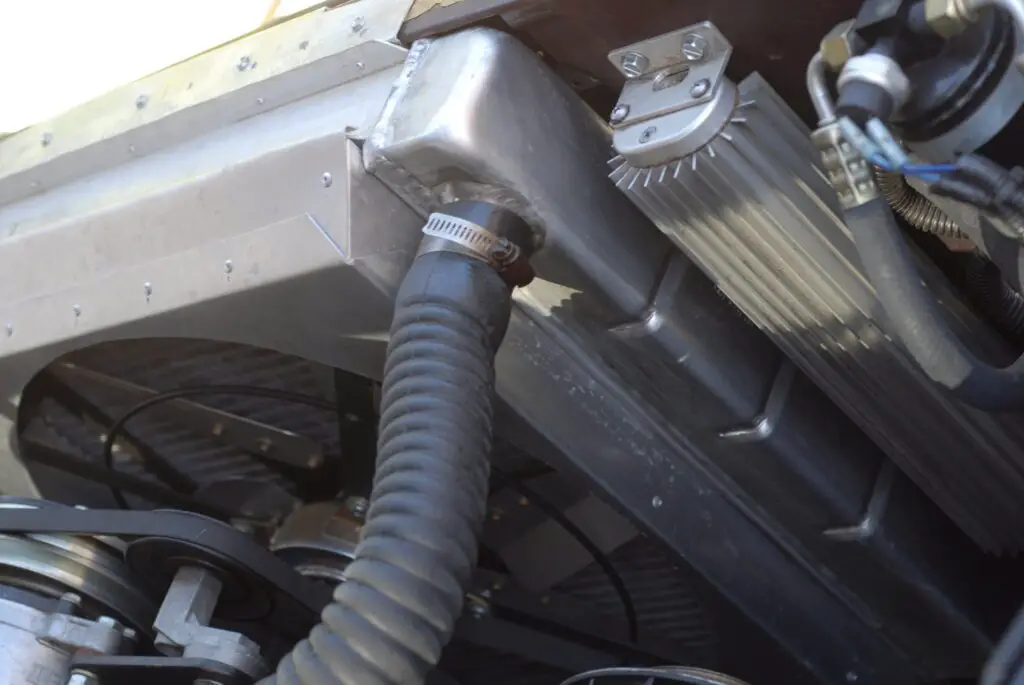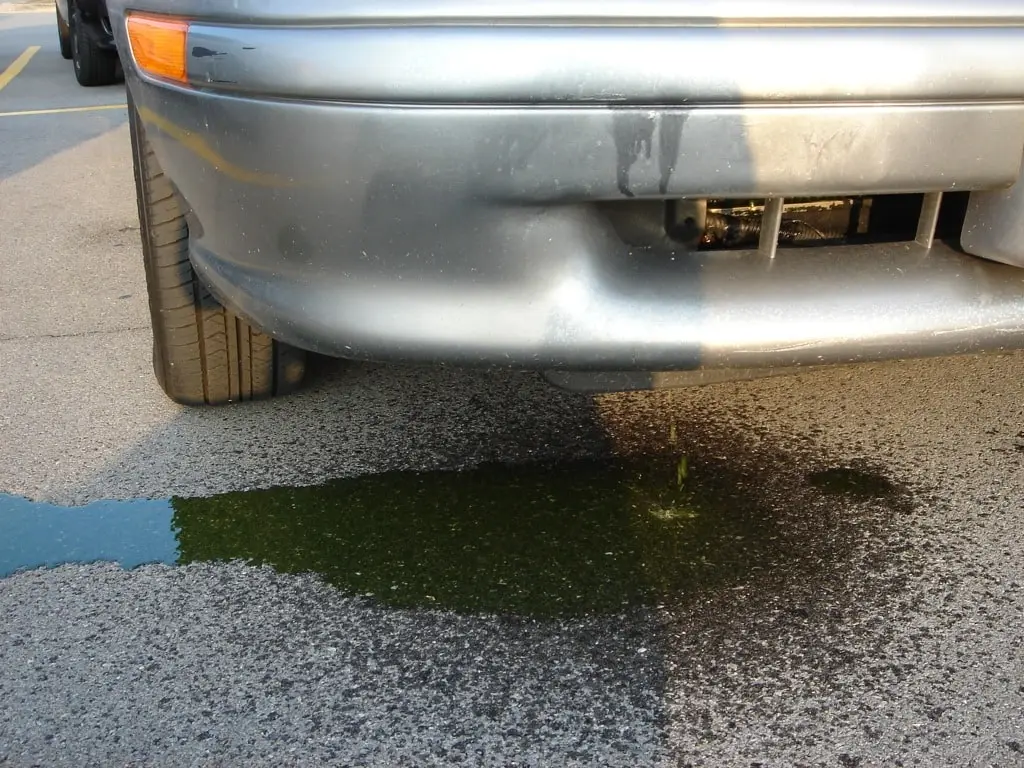If you’ve noticed your car’s cooling fan rapidly turning on and off, you’re likely wondering what’s causing this pulsing behavior. A properly functioning electric cooling fan is critical for preventing the engine from overheating. But when the fan starts cycling on and off, it indicates a problem exists.
In this detailed guide, we’ll explore all the possible reasons Why Your Car’s Cooling Fan Keeps Pulsing, simple tests to diagnose the root cause, if the vehicle is safe to drive, and how to properly repair the issue.
What Does a Pulsing Cooling Fan Indicate?
When mechanics describe an electric engine cooling fan that’s “pulsing,” it refers to the fan rapidly switching between on and off instead of running continuously at a steady speed. Some common pulsing patterns include:
- The fan slowing down briefly, nearly stopping, before suddenly speeding up again.
- The fan completely stopping for 1-2 seconds before abruptly restarting.
- The fan struggling to maintain a constant RPM, fluctuating between slower and faster speeds.
- The fan cycling on for a few seconds, off for a few seconds, then back on, repeatedly.
Any of these situations point to the cooling fan not receiving consistent power. The pulsing or cycling happens as the fan tries to start spinning but then loses voltage each time it turns off.
Why Your Car’s Cooling Fan Keeps Pulsing? While a faulty fan motor can be the culprit, in most cases the issue stems from a problem with the electrical supply and delivery of power to the fan. Let’s explore the most frequent reasons behind a pulsing automotive cooling fan.
4 Common Causes of a Pulsing or Cycling Cooling Fan
1. Insufficient Electrical Power
The number one cause of an erratic cooling fan that pulses or stutters on and off is insufficient current and voltage from the electrical system. The fan motor requires a momentary surge of 2-3 times its normal operating amperage when first switched on. If battery voltage or alternator output is weak, the fan can’t get the power it needs to start and run properly.
Common electrical system issues that can cause insufficient fan power include:
- Loose or corroded wiring connections
- A worn out or dying battery
- Failing alternator not supplying adequate amps
- Fan wiring that’s too small of a gauge
- Other accessories overloading the circuit
Why Your Car’s Cooling Fan Keeps Pulsing? With inadequate current flow, when the fan first turns on it runs for a second or two until the voltage dips below the threshold needed. The momentary drop in power cycles the fan off briefly before it tries kicking back on again. This rapid pulsing continues until full normal voltage is restored.
2. Faulty Cooling Fan Relay
On many vehicles, power to the cooling fan routes through a relay switch first before reaching the fan motor itself. If this fan relay becomes defective, the contacts inside the relay can rapidly open and close when engaged.
This cycling action interrupts voltage delivery to the fan motor, causing it to turn off and on in time with the chatter of the relay. You may even hear an audible clicking noise from the relay as the contacts vibrate. This condition will quickly destroy the relay contacts until they no longer close at all.
3. Deteriorating Fan Motor
Like any electric motor, cooling fan motors slowly deteriorate over thousands of hours of runtime. As the motor starts to fail, it has difficulty spinning and maintaining its designed RPMs.
When an aging fan motor begins wearing out, you’ll notice the fan trying to spin faster but then slowing down briefly before ramping back up to full speed. This surging or pulsating pattern indicates the motor is struggling to operate correctly as performance declines.
4. Malfunctioning Coolant Temperature Sensor
The engine computer relies on signals from the coolant temperature sensor to know when to activate the radiator cooling fan. If this sensor malfunctions or fails, it can send erroneous or conflicting data back to the computer.
For example, an erratic temperature sensor may tell the computer the coolant temp is too high, triggering the fan on. But a moment later it reports normal temperatures within range, so the computer shuts the fan back off. This ON then OFF cycle repeats endlessly, mimicking a pulsing fan condition.
How to Diagnose the Cause of a Pulsing Cooling Fan
Why Your Car’s Cooling Fan Keeps Pulsing? When faced with a cooling fan that’s constantly pulsing or cycling on and off, here are some basic diagnostic tests to find the root cause:

1. Check battery and alternator output – Use a multimeter to test voltage of both. Battery should show 12+ volts with the engine off. Alternator should show 13.5-14.5 volts while engine is running.
2. Inspect wiring and connections – Look for damaged wires, burnt or corroded terminals, loose connectors. Make sure alternator wiring isn’t grounding out.
3. Check cooling fan fuses and relays – Swap or replace any blown fuses. Test fan relays by switching with an identical working relay.
4. Monitor the coolant temperature sensor with a scanner – Look for erratic readings that don’t match the actual engine temperature as it warms up. Replace the sensor if necessary.
5. Directly test the fan motor – Bypass any wiring issues by jumping power directly to the fan motor. If it still pulses, the motor is worn out or damaged.
By methodically testing from the power source outward, you can isolate whether the electrical supply, switches, sensors, or the fan itself is causing the pulsing problem.
Is the Car Safe to Drive with a Pulsing Cooling Fan?
- A pulsing fan due to electrical problems – You can likely drive short distances as long as the fan partially works. But it could fully fail at any moment leading to overheating.
- A pulsing fan due to a bad sensor – The computer may put the engine into a limited power limp mode if it thinks the engine is overheating, even if it’s not.
- A pulsing fan due to worn out motor – As the fan loses cooling capacity, it raises the risk of overheating and major engine damage, especially in traffic.
So while you may be able to gently nurse the car to the shop or home, it’s risky to drive any further than absolutely necessary until the problem is properly repaired. An inoperable cooling fan can quickly lead to catastrophic overheating damage.
How to Repair Electrical Problems Causing a Pulsing Fan
If you’ve diagnosed the pulsing fan issue down to an electrical system problem, here are tips on repairs:
- Recharge or replace the battery if testing reveals low voltage or a weak cell.
- Replace the alternator if it’s putting out insufficient amps to meet demand.
- Clean off corrosion and secure any loose wiring connectors related to the fan circuit. Replace any damaged wiring.
- Make sure the existing fan wires are an adequate gauge to handle the load. Upgrade wire size if undersized.
- Install fresh relays that match the original fan relay amp rating and design.
- Inspect all fuses pertaining to the fan circuit. Replace any that are missing or blown with the proper high amperage fuse.
- Check belts and pulleys that drive the alternator. Tighten or replace as needed to maximize alternator output.
- Clean or replace any corroded grounding wires and connections to ensure proper grounding.
- Consider upgrading to a heavier duty fan wiring harness kit better suited for the amperage load.
- If the electrical gremlin evades diagnosis, have the entire charging and starting system tested for hidden faults.
Why Your Car’s Cooling Fan Keeps Pulsing? Addressing any electrical deficiencies will ensure sufficient power is delivered to the fan motor, eliminating the pulsing behavior.
Replacing a Bad Cooling Fan Motor
If you’ve isolated the root cause to a failing fan motor, replacing it is the fix:
- Order the correct replacement fan assembly that exactly matches the original. Don’t just replace the motor itself.
- Compare specs of old vs new fan, verifying the CFM rating and amperage draw are identical.
- Install the new fan assembly along with any required hardware and wiring connections.
- Clear any diagnostic trouble codes and verify normal operation after replacement.
Why Your Car’s Cooling Fan Keeps Pulsing? While certainly annoying, cooling fan motors are relatively inexpensive to replace, typically from $100-250 depending on the vehicle. Putting in a new fan motor will stop the pulsing issues and restore normal cooling protection.
How to Fix a Faulty Coolant Temperature Sensor
If the culprit ends up being a defective coolant temperature sensor intermittently giving incorrect readings, here’s how to fix:
- Locate the sensor, usually near the thermostat housing or cylinder head coolant passage.
- Unplug the sensor connector by releasing any locking tab or slide lever.
- Use the appropriate sensor socket tool to unscrew the sensor from its housing.
- Apply fresh thread sealant to the replacement sensor and install snugly in the engine.
- Securely plug in the sensor’s electrical harness connector until fully latched.
- Clear any diagnostic trouble codes so the computer recalibrates to the new sensor’s readings.
- Verify the temperature gauge and readings align as the engine warms up.
With the proper input from an accurate coolant temperature sensor, the computer will be able to correctly control the radiator fan operation.
Best Practices to Avoid Cooling Fan Problems
Why Your Car’s Cooling Fan Keeps Pulsing? Here are some tips to maximize electric cooling fan life and performance:
- Maintain the battery connections and have the alternator load tested annually.
- Use the heaviest gauge wire practical when wiring electric fans.
- Install a dedicated fan relay instead of tapping power off other circuits.
- Ensure the fan shroud fully seals airflow, preventing recirculation.
- Periodically blow out debris from the fan with compressed air.
- Address any overheating issues promptly before damage occurs.
- Listen for abnormal fan noises as an early warning of impending failure.
With proper maintenance and repairs when needed, your electric cooling fan should provide years of smooth, trouble-free operation.
Other Cooling System Issues That Mimic Overheating
While pulsing fans point to an electrical problem, other cooling system issues can mimic overheating symptoms:
Milky oil: Head gasket failure allowing coolant to mix into the oil, reducing its ability to lubricate and cool.
Overheat warning light: Low coolant level, cooling system leaks, coolant flow blockage, or water pump failure.
Rising temperature gauge: Faulty gauge, coolant sensor, or thermostat not opening properly.
Steam from the hood: External coolant or radiator leak.
Sweet coolant smell: Sign of internal coolant leak into the engine.
Why Your Car’s Cooling Fan Keeps Pulsing? If you suspect larger cooling problems, have the complete system inspected and tested by a professional. Properly repairing any issues will get cooling performance back to normal.
FAQS – Why Your Car’s Cooling Fan Keeps Pulsing
Still have some lingering questions about dealing with pulsing electric cooling fans? Here are answers to a few frequently asked questions:
What if the fan stops running completely?
An inoperable fan risks serious overheating. Immediately shut off the engine if the fan stops altogether and determine the cause.
Can I temporarily rig the fan to run constantly?
Not recommended as it strains the electrical system. It’s best to properly diagnose and repair the root cause of the pulsing.
Is adding an electric fan safe for an older car with a mechanical fan?
Yes, it can supplement cooling capacity provided the added electrical load doesn’t exceed the alternator’s output.
What’s the normal cooling fan RPM range?
Varies depending on vehicle and fan design but typically 2000 – 3000 RPM for maximum airflow is ideal.
Can a scanner tool help diagnose fan issues?
Yes, a scanner can read sensor data, temperature readings, commanded fan speed, and trouble codes related to electric cooling fan operation.
Why Your Car’s Cooling Fan Keeps Pulsing? Pinpointing the cause of a pulsing and cycling electric cooling fan and making the proper repairs will get it running smoothly again, protecting your engine from overheating damage. With a properly operating fan, your vehicle can continue cruising down the highway for years to come.

